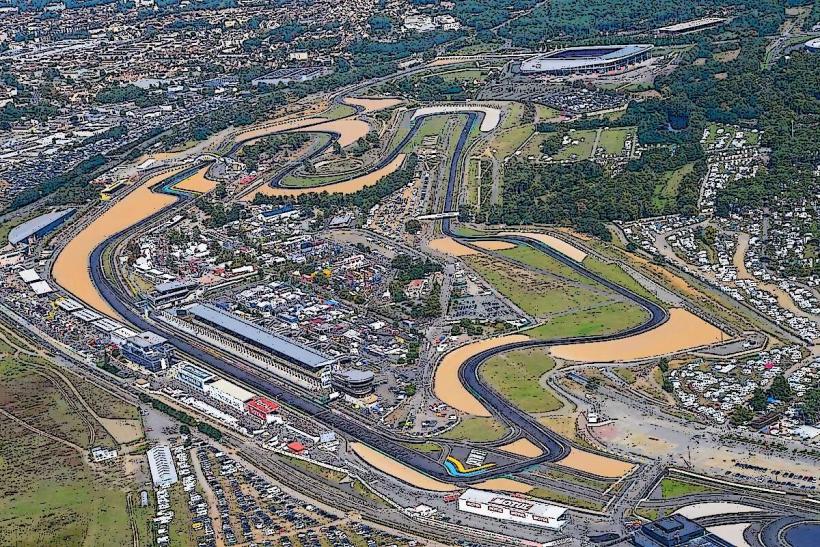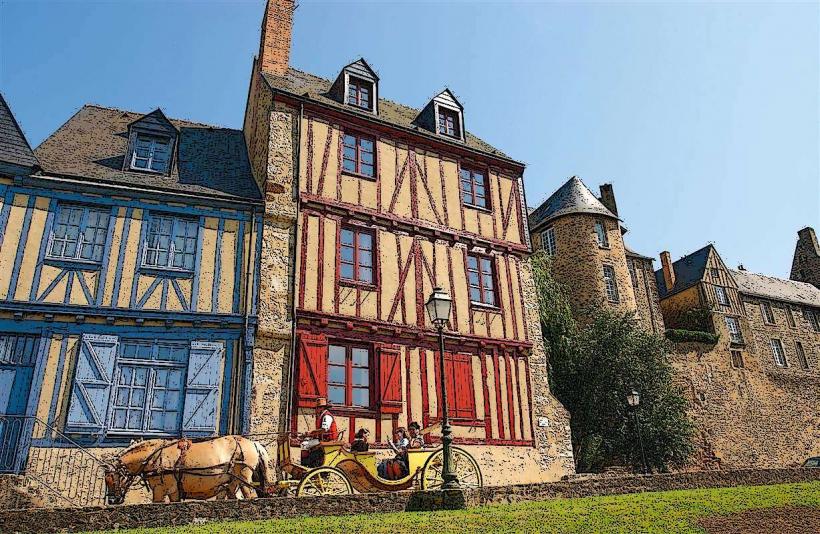Information
Landmark: Le Mans CathedralCity: Le Mans
Country: France
Continent: Europe
Le Mans Cathedral (Cathédrale Saint-Julien de Le Mans) is a magnificent structure located in the heart of Le Mans, France. This Gothic and Romanesque cathedral is known for its imposing architecture, historic significance, and stunning stained glass windows. It is one of the most important landmarks in the city and serves as the seat of the Bishop of Le Mans.
Key Features of Le Mans Cathedral:
1. Historical Background
- The cathedral's origins date back to the 6th century, when a church dedicated to Saint Julian was first built on the site. However, the current building was constructed between the 11th and 15th centuries, blending Romanesque and Gothic styles over several centuries.
- It became the seat of the Bishop of Le Mans in the 16th century and has remained an important religious and cultural symbol of the city.
- The cathedral has witnessed significant events in French history, including royal coronations and religious ceremonies. It has also undergone renovations over the years, particularly after being damaged during the French Revolution.
2. Architectural Style
- The cathedral is a blend of Romanesque and Gothic architecture, with Romanesque elements visible in the crypts and the lower parts of the structure, and Gothic elements most prominent in the nave, choir, and façade.
- Romanesque features include rounded arches and thick walls, which give the building a sense of solidity and strength. The Gothic additions are characterized by pointed arches, vaulted ceilings, and flying buttresses, which allow for taller walls and large stained glass windows.
3. Exterior Features
- Façade: The west façade of Le Mans Cathedral is one of its most striking features, with its large rose window, sculpted arches, and Gothic spires. The central portal is adorned with biblical scenes and religious figures, showcasing the mastery of medieval sculptors.
- Twin Towers: The cathedral has two towering spires, which rise above the city, visible from various points in Le Mans. The spires are decorated with intricate carvings of saints, angels, and biblical figures.
- Flying Buttresses: The cathedral is known for its impressive flying buttresses, which support the walls and allow the building to have expansive windows without compromising structural stability.
4. Interior Highlights
- Nave: The nave is vast and soaring, with an impressive vaulted ceiling that draws the eye upward. The space is filled with light from the cathedral's stained glass windows, which depict scenes from the Bible and the lives of saints.
- Stained Glass Windows: The cathedral's stained glass windows are among its most remarkable features. Some of the windows date back to the 12th century and are considered masterpieces of medieval art. The windows portray biblical stories, saints, and scenes from the life of Christ. The colors of the glass create a vibrant atmosphere inside the cathedral, especially when sunlight streams through.
- Choir: The choir is located at the eastern end of the cathedral and is surrounded by intricately carved wooden stalls. These stalls are beautifully decorated with scenes from the Bible and provide a stunning visual focal point within the cathedral.
- Altar: The main altar of Le Mans Cathedral is a Baroque-inspired structure, with elaborate sculptures and golden details. It is a place for religious ceremonies, and it is an important part of the cathedral’s spiritual life.
5. Crypts and Chapels
- Beneath the cathedral lies the crypt, which is home to the tombs of several notable figures, including bishops and saints. The crypt is an intimate and solemn space, with Romanesque architecture that contrasts with the grandeur of the upper cathedral.
- The cathedral also has several chapels, each dedicated to various saints. These chapels often contain paintings, statues, and altarpieces, contributing to the overall spiritual and artistic richness of the cathedral.
6. Cultural Significance
- Le Mans Cathedral is not only a religious center but also an artistic treasure. Its architectural splendor, historical importance, and artistic heritage make it a significant cultural landmark in the region.
- The cathedral is a venue for concerts, religious ceremonies, and festivals, particularly during Christmas and Easter. It is also a popular destination for tourists interested in exploring the city’s rich Gothic architecture.
7. Restoration and Preservation
- Over the years, Le Mans Cathedral has undergone several rounds of restoration, particularly after damage sustained during the French Revolution. The cathedral has been carefully preserved to maintain its architectural integrity and to protect its valuable stained glass windows and sculptures.
- In recent years, the cathedral has also been part of efforts to preserve the historical integrity of the Cité Plantagenêt (Old Town of Le Mans), as part of the broader preservation of Le Mans' medieval heritage.
Conclusion:
Le Mans Cathedral is a stunning example of medieval architecture, with its mix of Romanesque and Gothic styles, magnificent stained glass windows, and rich history. It is not only an important religious site but also a cultural and architectural landmark in the city of Le Mans. Whether you're interested in its historical significance, artistic beauty, or spiritual importance, Le Mans Cathedral is a must-visit destination for anyone exploring this fascinating city.



